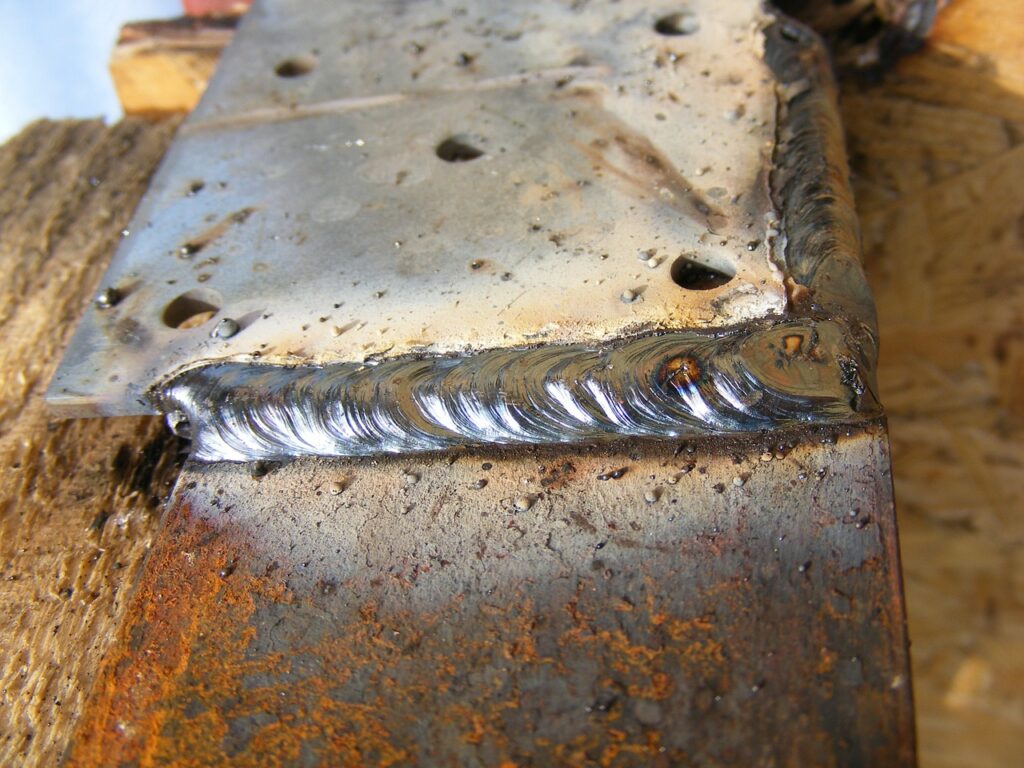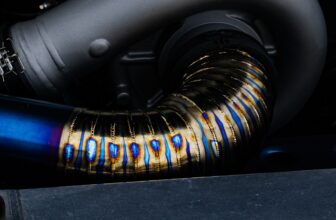Flux Cored arc welding (FCAW) is a very well-known semi-autonomous type of welding. It is very similar to (MAG) welding, which requires shielding gas. However, Flux-core arc welding is also possible without shielding gas.
As compared to MAG, the flux cored arc welding is more productive and easier to operate. It usually works well with stainless steel, cast iron, and hard surfacing alloys. The Flux cored arc welding uses a different approach.
The FCAW process requires a tubular welding wire in which heat is directly fed through an electric arc fuse. It is similar to a MAG welding process, but the only difference is a hollow wire rather than a solid metal electrode.
Now in terms of shielding gas, The FCAW process can be divided into two different types. One method requires an external shielding gas, while the other method does not use a shielding glass.
Compared to the MAG welding process, we can figure out that an FCAW process can be done with or without the need for shielding gas. Now the most common types of shielding gas used in an FCAW process are argon and carbon dioxide.
You May Also Like Welding Beads
With the use of shielding gas, you can say FCAW is dual shield welding. This is because the weld is safe from oxidation and slags.
If we compare the shielding method of Flux cored welding with MAG, we will find that the metals produced through FCAW have lesser defects and better properties.
On the other hand, when welding does not need shielding gas, you can carry it out directly through heat provision by the core.
History Of Flux cored Arc Welding
Before the 1950s, welding was a manual process that is MMA (manual metal arc welding). MMA had a lot of restrictions, because of which the method was a lot harder.
Many restrictions came along with the manual metal arc welding method. In search of an alternate way of welding, in 1957 FCAW process was an invention of Arthur bernard. FCAW was developed with a close relationship to the metal inert gas welding process.
As both of the methods use continuous wire feeding and the same type of power supply. But as the FCAW method had very few restrictions, it growingly became the most productive process out of all the other manual techniques.
The FCAW surprisingly became a better method of welding and was a preference of welders over MAG. One of the biggest reasons for this was its ease of use.
The FCAW is by far the easier way of welding metal as compared to other manual welding processes. Even if you have no skill in welding, you can somehow manage to handle FCAW.

Flux Cored Arc Welding FCAW
1. FCAW-G
FCAW-g is a type of flux cored arc welding that uses shielding gas. As already mentioned above, The welding process of FCAW can work both with or without shielding gas.
Now the method in which the shielding gas is required is known as FCAW-G. The most common types of welding gases are argon or carbon dioxide. Shielding gas protects the weld pool from oxidation.
On the other hand, weld metal is also protected from slag. This process is “dual shield welding”. The FCAW-g uses both shielding gas and metal electrode, and in this way, it produces metal with constant and better properties.
Also Check Best TIG Welder Under 1500
2. FCAW-S
This method is only possible because of the flux cored in the tubular wire. The electrode generates a gas that protects from oxidation and also forms a slag around the molten metal.
This process is highly portable and can be carried outside as it needs no shielding gas is required. So the FCAW-s is highly suited for outdoor welding works as conditions like wind and humidity would not have on your welding work.
The FCAW-S welding method is also suitable for base metals as it has an excellent penetration capability.
Advantages Of Flux-cored Arc Welding
The FCAW is a very convenient and portable welding method as it has less equipment than MAG.
Compared to the MAG welding method, FCAW also provides better flexibility when welding alloy and complex metals components.
Apart from portability, the FCAW is also good for thicker metals as it has penetration properties. The FCAW is also metal for high-speed welding work. Furthermore, its high speed would never affect the property and consistency of the output metal.
In comparison to MMA and MAG welding methods, FCAW is a more straightforward metal welding process. It is ideal for someone who has less experience or low skill in terms of welding.
As shielding gas isn’t a need, flux cored arc welding is best for outdoor welding and can withstand strong breezes.
Disadvantages Of Flux-cored Arc Welding
Although the FCAW is one of the highest-yielding methods of welding, it has its cons.
Porosity is a big problem if the shielding gases cannot escape from the rod as your welded metal might have pores in it.
FCAW produces more smoke than other welding processes, And this noxious smoke can make it pretty hard to see the weld pool.
As compared to a solid electrode, A tubular electrode needs better handling and storage. Also, they are more expensive than filler metal.
You May Also Like Best TIG Welder Under $2000
Final Verdict
FCAW is a suitable process to carry out all position welding unless you have a correct filler and flux material. The high-speed welding is and portability gives FCAW an edge over others.
Check Also Best TIG Welder For the Money







[…] level needed for fusion bonding or other high temperature joining methods such as gas tungsten arc Welding ( GTAW ). As a result you end up with defects like inclusion flash. Small incidences where material […]